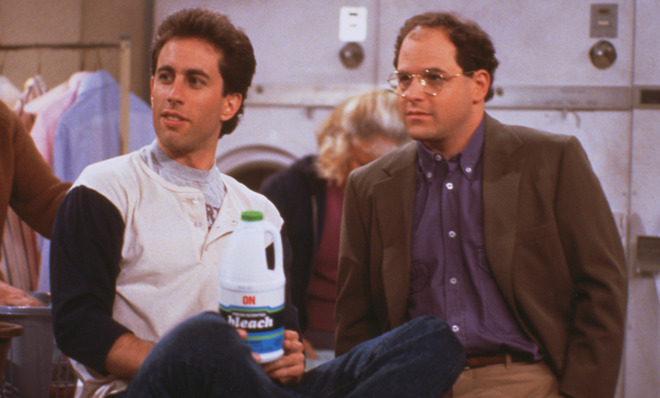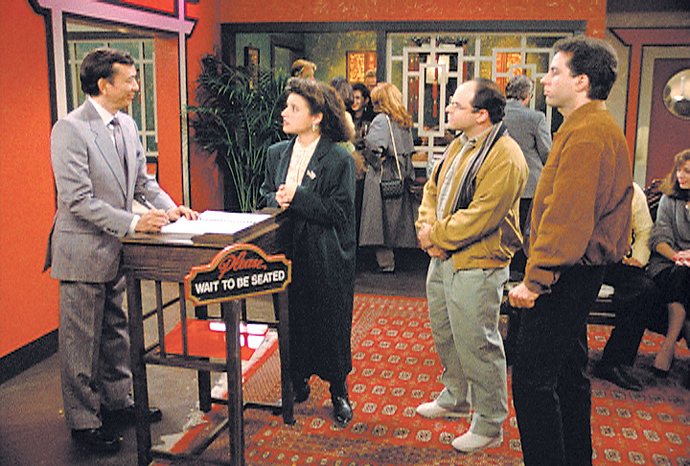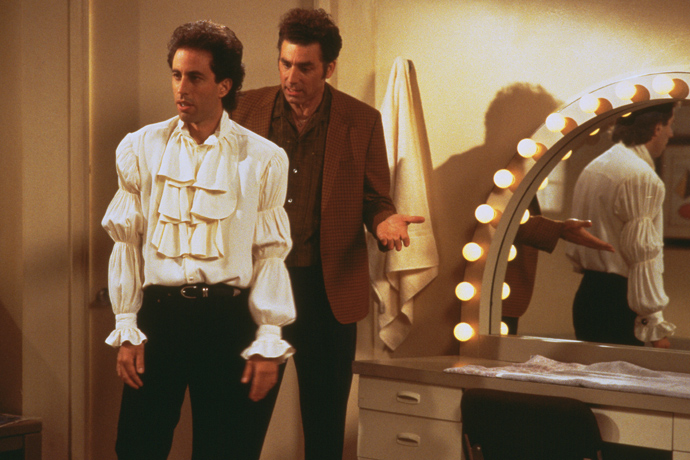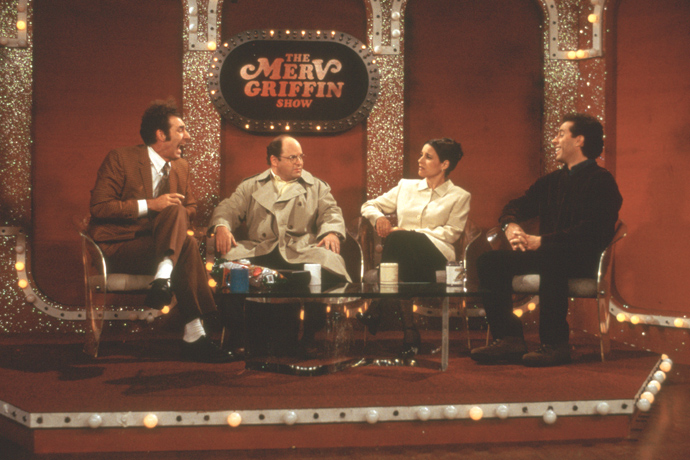Why Seinfeld is still master of its domain
On the 25th anniversary of its premiere, it's hard to find a sitcom that hasn't been influenced by Seinfeld

Seinfeld premiered 25 years ago this week — but even the most dedicated viewers of its era probably missed its inaugural episode. Dumped in a graveyard slot as a midsummer replacement, the series (which was then titled The Seinfeld Chronicles) was given just four episodes to justify its existence when it hit the airwaves in 1989.
From those inauspicious origins came Seinfeld, the sitcom juggernaut that served as appointment viewing for more than 76 million Americans at its peak. Even in syndication, Seinfeld remains master of its domain; though it hasn't produced a new episode since 1998, the series has earned $3.1 billion from reruns alone and still lords over the writers' rooms of dozens of sitcoms looking to replicate its success.
Not bad for a series which was famously described by its creators as "a show about nothing."
The Week
Escape your echo chamber. Get the facts behind the news, plus analysis from multiple perspectives.

Sign up for The Week's Free Newsletters
From our morning news briefing to a weekly Good News Newsletter, get the best of The Week delivered directly to your inbox.
From our morning news briefing to a weekly Good News Newsletter, get the best of The Week delivered directly to your inbox.
Seinfeld's genius, of course, was turning "nothing" into comedy gold. Significant time was spent on magnifying everything, from waiting for a table at a Chinese restaurant to the importance of shirt button placement to the best kind of babka. The comedy wasn't in the situation — it was in the characters' reaction to it. That made it unique among all sitcoms of its era.

Pre-Seinfeld, the sitcom was a genre renowned for mollycoddling its audiences. Contemporaries like Married…With Children, The Cosby Show, and even Cheers all followed a familiar format, with their (relatively) likable characters doing (relatively) wholesome things. Seinfeld gave us a different group: The hypercritical titular comedian, the eternally shallow Elaine, the slacker supreme Kramer, and George Costanza, who was such a loser that it practically defied superlatives.
These are characters who reveled in each others' misfortunes, or the misfortunes of any innocent bystanders unfortunate enough to get caught in their orbit. Over the course of the series, they demonstrated their fundamental flaws: Dumping lovers for failing to put exclamation marks at the end of phone messages, getting a hapless restaurateur deported, and even breathing a sigh of relief when a bride-to-be died of a rare case of glue poisoning. As the judge said in the series-ending trial of the show's finale: "I don't know how, or under what circumstances the four of you found each other, but your callous indifference and utter disregard for everything that is good and decent has rocked the very foundation upon which our society is built."
He could hardly have been more accurate. That "callous indifference" and "utter disregard" helped to normalize the tone for many popular sitcoms that followed in Seinfeld's wake, from It's Always Sunny in Philadelphia to The Office to Larry David's own Curb Your Enthusiasm.
A free daily email with the biggest news stories of the day – and the best features from TheWeek.com

But Seinfeld's influence goes beyond characterization. Before Jerry and Co. began dropping regular references to Art Vandelay or Bob Sacamano, the idea of season-spanning storylines — let alone call-back jokes — was unthinkable. The conventional wisdom was that sitcoms should hit the reset button every week, so as not to confuse or alienate nonregular viewers. But Seinfeld's obsessive self-references earned it the loyal audience that was key to its success, and its rivals noticed. The serialized, self-referential nature of modern behemoths like Friends, How I Met Your Mother, and The Big Bang Theory are some of the most notable examples of Seinfeld's influence on the modern sitcom (and then there's Arrested Development, which is almost incomprehensible out of sequence).
Likewise, long before the likes of critically beloved series like 30 Rock and Community were praised as postmodern sitcoms, it was Seinfeld that blazed the trail. From the tongue-in-cheek product placements to the "show within a show" storyline from the sitcom's fourth season — a wonderfully warped funhouse mirror in which life imitated art imitating life as George and Jerry pitched NBC their own "show about nothing " — Seinfeld brought meta into the mainstream.
All of those things are central to Seinfeld's greatest legacy: It showed network executives that audiences were sophisticated enough to understand sitcoms that broke the mold — and hungry enough to want more of them. It showed that they could keep track of a kaleidoscope of bit-part characters and multistranded storylines, and that an entire nation could relate to the day-to-day annoyances of big city life.
Even during its fumbling first episodes in 1989, Seinfeld was like nothing that had ever aired on U.S television — but 25 years later, its influence can be found in just about every sitcom on television. Put simply, Seinfeld may have claimed to be a show about nothing — but in the end, it changed everything.

All images courtesy SONY Pictures Television
Daniel is a freelance writer, an Englishman abroad, and a pop culture junkie. He writes about film, TV, and lifestyle for outlets including MSN, The Guardian, The Times, The Independent, The Evening Standard, and Yahoo.


